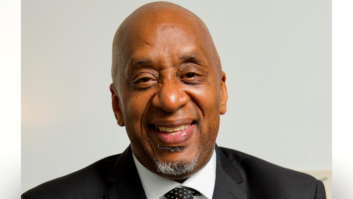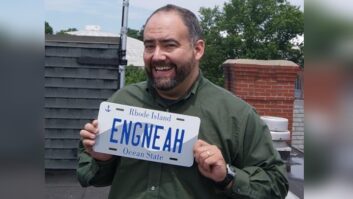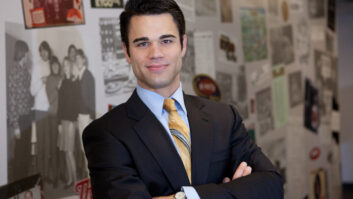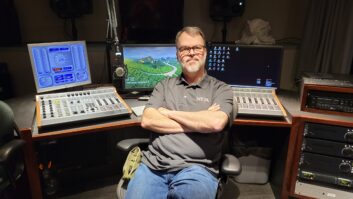This week we’re featuring highlights from Radio World’s 2021 ebooks. This article appeared in “After the Masks Come Off.”
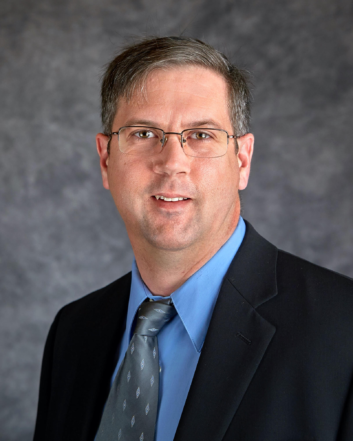
Scott Foster has been with Salem Media Group for 22 years. He remembers learning early on that when it comes to new facility projects, the company’s mission is more important than the money.
So where another company that bills $25 million a year in a market may have the luxury of spending $3 million to build a studio cluster, Salem’s team typically must plan around significantly smaller numbers.
Salem owns about a hundred stations in roughly 35 markets, including most of the largest cities. Some carry teaching and talk programs that are purchased by Christian ministries; much of this content is delivered to Salem via IP using XDS receivers from ATX.
Other stations carry Salem’s conservative talk format, distributed through Westwood One to XDS satellite receivers. And in major markets, Salem FM stations carry the company’s Fish format.
Efficiency was already a byword. “We have found that when we get several stations together, we can leverage the same salesforce, the same production force and board ops. Where another company with a three-station market might build 10 or 12 studios, we probably have five or six.”
In the long term, the company wants to downsize space further (though regional NOCs are not in its plans). And while remote work will grow, at least some in-person work will continue. For example, engineers and operations managers generally need to work on site. And sales teams benefit from the camaraderie and competition of working together.
But Foster expects that more air talent will work remotely and that future facilities will involve fewer studios, fewer seats and more “flex” space.
Even 20 years ago, before virtualization was a thing, Salem was thinking about operating lean. It would install a “station in a rack,” with Broadcast Tools switchers stacked on one another.
“We started it in Seattle; we had four radio stations there using five or six studios, all of which showed up on the switcher. When a studio went live, it was brought up on the switcher; when we didn’t need it, it was a satellite-driven.”
Those stacks of switchers, of course, are gone now. Foster recently managed a buildout in Washington and says, “I have one 25-pair Cat-5 and four punchblocks in that entire facility. Everything else is patch blocks, a biscuit box with network connections in it.”
Efficiency also means careful management of how rooms are used. Salem has many clients who come in and record half-hour shows on various topics, so even before the pandemic, scheduling was important, and only more so now.
“Nothing is worse than having [company executives] Dave Santrella or Ed Atsinger walk through a facility and see seven studios but four of them are dark with nobody in them. You’re wasting rent, you’re wasting capital. So we’re on a drive to shrink and push staffs to optimize the usage of their facilities.”
Exploring virtualization
Thinking centrally has been a long-term trend.
Until the early 2000s IT functions were managed locally at each Salem cluster, but this left the company vulnerable to security issues, so it began standardizing and consolidating back-office functions such as sales and management computers, traffic and VoIP phone systems.
“I watched the IT closet in our corporate office go from seven racks to one rack as they took all this stuff and they dropped it in our data centers,” Foster said.
[Check Out More of Radio World’s Ebooks Here]
Then about six years ago Foster read about the BBC project exploring centralized local virtual radio, called ViLOR, and was inspired.
“Our stations run the same content in 35 markets. Why do I have 35 markets running these things, 35 people babysitting them and 35 facilities to keep up — 35, 35, 35? Why couldn’t I do it with two or three and distribute it across all of them?”
He approached Telos Alliance and a project integrator in Great Britain, both of which were involved in ViLOR, to learn more. As a result, Salem has performed some tests of virtualization in a “sandbox” project that involves a console engine, automation and codecs in Dallas that are run virtually through a data center and can be controlled from Seattle.
While this is a beta concept right now, Foster expects that Salem will continue to move in that direction.
“We are starting to transport a lot of content between studios and transmitter sites via IP; having that infrastructure already in place is one of our stepping stones.”
Standardizing on automation is another step. Salem was using systems from four vendors, but with virtualization in mind, it settled on WideOrbit.
“We’ve virtualized in our own facilities; the machines in the rack are where the audio takes place. Machines in the studios are just a GUI interface — a Wyse terminal interface back to the rack to give feedback, to see and manipulate the log.” Most stations, he said, will use Livewire infrastructure in support of the virtualization of the automation.
“The biggest fight is the microphone delay, right? Everybody is so used to hearing themselves in the microphone. You have a half-second delay and it drives them nuts.”
But giving a flavor of what’s to come, Salem has one local talk host who lives far from his market and manipulates WideOrbit automation remotely. “He could voice track in real time if he wanted to. It’s like the studio has been extended to his office halfway across the country.”
But for now, automation resides on servers in each facility, rather than moving it to remote data centers.
“Your troubleshooting changes then because you can’t just clip leads on a wire and hear the audio; you’ve got to be able to track packets and delay.” But once the technical staff has become accustomed to working with virtualization, Foster suspects Salem will make that jump.
Workforce issues
Some broadcasters have said that the pandemic accelerated radio’s move toward workflows being built around service agreements rather than one-time capital equipment purchases. Is Salem seeing that trend?
“On the software side of things, our Adobe Acrobat and Adobe Audition are annual pay. But the automation we’re buying outright.
“But yes I’m being asked to analyze it, and generally if we can show that it’s cheaper to do something as op-ex over four or five years, we’ll do it. But it has to pay off quickly.
“I’m not seeing it in transmitters or console systems — though if somebody like a Telos or a Wheatstone offered service via a centralized data center, it could be an interesting model. A station that reaches 10,000 people probably isn’t going to drop $15,000 on an audio over IP system, but a manufacturer might be able to get them signed up for a hundred dollars a month.”
Interestingly, Foster hears from vendors that even offer tower lighting as a service — “‘Hey, for $6,000 a month, we’ll put the lights on the tower, we’ll monitor it, we’ll do all the filings and fix them when they go bad. We just ask that you sign up for five or 10 years.’”
He says this idea might be appealing if a station is looking at a 1,200-foot tower in Omaha that needs new LED lighting, in which case the engineer may have to weigh whether it would be better to pay someone a monthly fee for a predetermined number of years, or spend $140,000 up front and bet that he can keep those new lights operational for longer than that.
One other unexpected impact of the pandemic is the difficulty in sourcing good tradespeople and working with utilities.
“I’m having a hard time finding electricians who will come wire up generators or do concrete pads. Likewise, I’ve got a major power project in Philadelphia, and PECO wouldn’t even come to the facility for a walkthrough because of COVID until just last week.”
Whether it’s for landscaping or paving a parking lot, tradespeople may just be too busy or are dealing with COVID issues of their own. Foster said it’s hard enough to locate one good vendor, much less three to all quote on a job.


